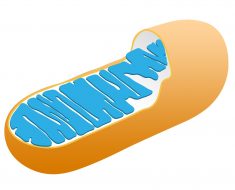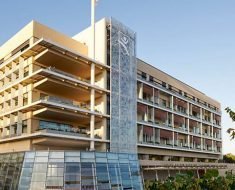A controversial technique of energising eggs to improve their quality in assisted reproduction has been shown in an experimental randomised trial to offer no benefit in terms of pregnancy or live birth rate. The study was performed at a large centre in Spain in 59 infertile patients aged 42 or less with a past record of unsuccessful IVF and now having embryo screening in a subsequent attempt; the patients were described as “difficult to treat”, and thus representing those previously proposed as likely to benefit from the enhanced egg quality procedure.
The technique, which has attracted much (albeit controversial) publicity in the past few years, requires the micro-injection of isolated mitochondria resident in “egg precursor cells” (found in ovarian tissue) into the egg of the infertile patient with a partner sperm during the ICSI procedure. The technology, now a proprietary process since 2014, has been claimed in previous reports to improve egg and embryo quality and increase the success rate of ICSI.
Results of the study are presented today by Dr. Elena Labarta of the IVI clinic in Valencia, Spain, at the 34th Annual Meeting of ESHRE in Barcelona. The study was performed at the IVI clinic in Valencia, now one of the world’s largest fertility centres.
The study followed the protocol suggested in the proprietary procedure. A biopsy of ovarian tissue was performed in each patient to isolate any egg precursor cells to obtain their mitochondria. Sibling eggs retrieved after stimulation in each patient were then randomised to two groups: one to receive the egg precursor cell mitochondria during ICSI, and the other to act as a control with ICSI alone. Following ICSI and fertilisation, the eggs were cultured to the blastocyst stage, when a biopsy was performed for embryo screening before transfer. Almost half the full patient group did not reach this point, mainly because of development failure during culture (and mainly in the treatment group).
Results showed that live birth rate per blastocyst transfer was 41% in the mitochondria transfer group and 39% in the control group, an indication that any “energising” effect of the mitochondria made no difference to outcome. It was also found that the number of chromosomally normal (euploid) blastocysts in the mitochondria groups was significantly less than in the control group. Labarta said that IVI has now abandoned the procedure as a study subject.
The science behind the procedure has been dogged by controversy since first reported in mice more than a decade ago. Later, in 2012, the US biologist Jonathan Tilly described the discovery of human egg-producing stem cells, dubbed “bona fide” egg precursor cells, harvested from the ovaries of six young women, which the investigators were confident would go on to make “baby-making eggs”. The controversy, of course, was implicit in the biology—that eggs could now be grown from egg precursor stem cells and need not be drawn only from a fixed store which declines to zero at the menopause.
At the level of fertility treatment the belief was that these egg precursor stem cells would invigorate eggs with a patient’s own mitochondria. As the proprietary website says: the “treatment uses the energy-producing mitochondria from your own egg precursor . . . cells, which are immature egg cells found in the protective lining of your ovaries, to supplement the existing mitochondria in your eggs. This process is designed to boost your eggs’ energy levels for embryo development.”
Results of this randomised trial now suggest that this does not happen, with no differences found in live birth rates in either of the two embryo cohorts.
Labarta described the procedure as “an invasive technique” proposed for patients with a poor prognosis for success in ICSI. “Unfortunately,” she said, “the technique was not found useful for this type of patient, so we see no value for this patient population.”
On previous studies which did show a benefit she explained that they did not include a well defined control group. “Our study, however, was the first prospective trial with an intra-patient comparison which could evaluate the net impact of the technique in the quality of the eggs, as they all came from the same cohort,” said Labarta.
So do egg precursor cells really exist? Did the IVI trial identify and isolate mitochondria from these ovarian stem cells? Unfortunately, this study cannot provide the answer. “The isolation of egg precursor cells and mitochondrial extraction were processes performed by the external company,” explained Labarta. “Our embryologists received the mitochondrial solution and injected it with the sperm at the time of ICSI. Thus, our team could never see the egg precursor cells, but worked with a solution presumably containing the isolated mitochondria from them.”
Source: Read Full Article





